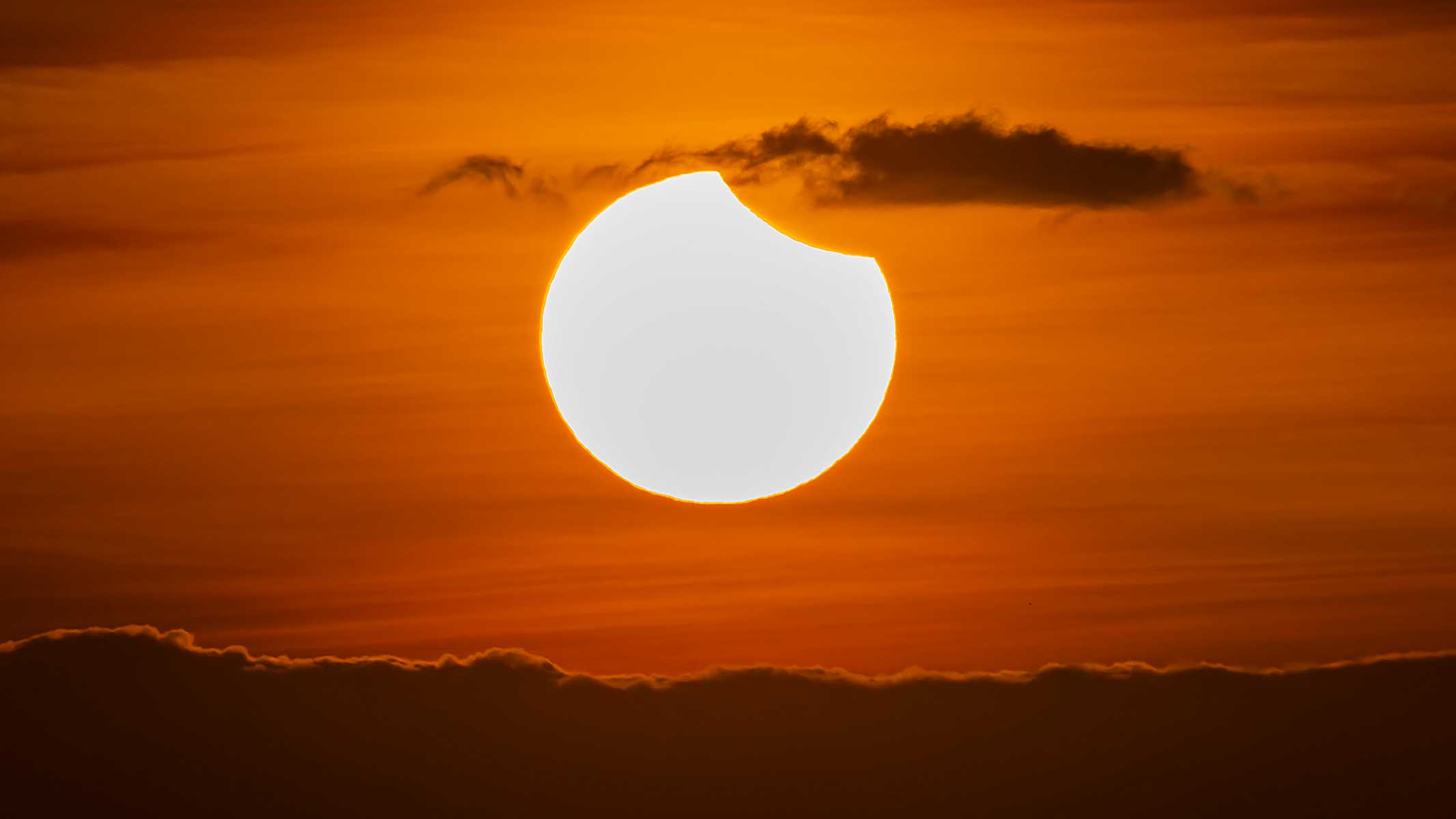On April 30, a partial solar eclipse will sweep across parts of Antarctica, the southern tip of South America and the Pacific and Atlantic Oceans.
The solar eclipse will begin at 2:45 p.m. EDT (1845 GMT), when it will be first be visible to skywatchers in the visibility area. The time of maximum eclipse will be at 4:41 p.m. EDT (2041 GMT), with the eclipse ending at 6:37 p.m. EDT (2237 GMT), according to TimeandDate.com (opens in new tab).
A solar eclipse occurs when the moon passes between Earth and the sun, and, in this case, thereby partly obscures the sun for viewers on Earth. During this month’s partial solar eclipse, a maximum of 54% of the sun will be obscured by the moon.
Related: Solar eclipse guide 2022: When, where & how to see them
Solar eclipses are possible due to a chance alignment between the moon, Earth and sun. Since the moon varies in its distance from our planet, an eclipse occurs when it passes in front of the sun at a point when it’s farther from Earth than average.
A partial solar eclipse occurs when only the penumbra, or the partial shadow, passes over viewers. Therefore, a part of the sun always remains in view during the eclipse.
Viewers within the eclipse’s path will see the moon cover a maximum 54 percent of the sun. However, those outside the path might still see a small scallop of the sun hidden by the moon. Therefore, the closer you are to the path of the eclipse, the greater the solar obscuration.

The eclipse reaches its maximum phase at 4:41 p.m. EDT (2041 GMT), when the axis of the moon’s shadow cone passes closest to Earth’s center, according to EarthSky.org (opens in new tab).
The April 30 eclipse occurs just four days before the moon reaches apogee — its farthest point from Earth. It will be the first of two partial solar eclipses in 2022. The second will occur on Oct. 25, then we won’t see another total solar eclipse until 2023. However, a total lunar eclipse follows this month’s partial solar eclipse only two weeks later, on May 16.
As a reminder, people should always use protective solar eclipse eyewear when viewing a solar eclipse. Using the wrong gear (or using it incorrectly) can burn your retinas, causing irreparable damage to your eyes. You can also check out our guide for how to photograph a solar eclipse.
Follow Samantha Mathewson @Sam_Ashley13. Follow us on Twitter @Spacedotcom and on Facebook.

